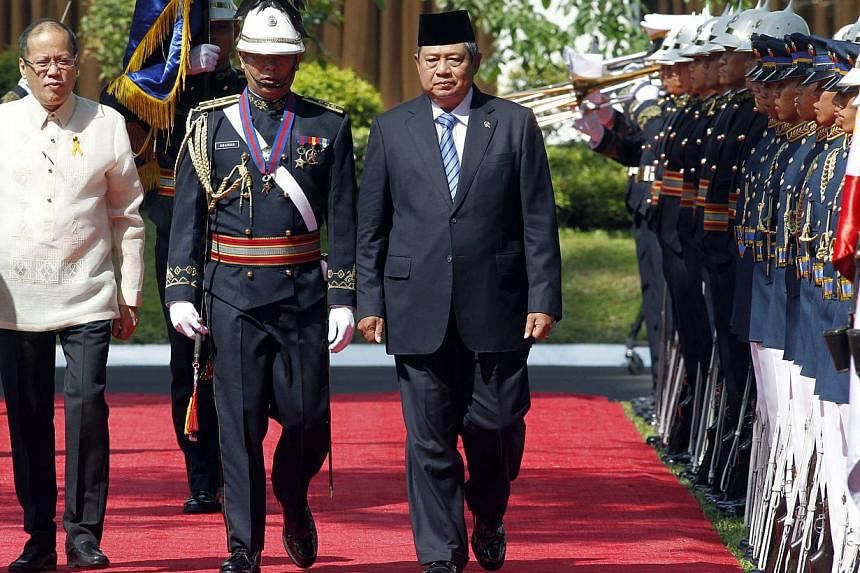The signing of an agreement on maritime boundaries between Indonesia and the Philippines last month was a significant development for the two Asean member states.
News of the agreement came amid rising tensions in the South China Sea sparked by worsening disputes over competing maritime claims.
The successful conclusion of the talks holds important lessons for all claimant states in the South China Sea dispute.
In December 2003, I was instructed by the Indonesian government to jumpstart the maritime boundary negotiation with the Philippines that had been left dormant by both countries for almost a decade.
I worked with my Philippine counterpart until 2010 when I left for Brussels. My successor continued the negotiations until their completion and the pact was signed on May 23 in Manila.
The negotiations were particularly significant because Indonesia and the Philippines are two of the largest archipelagic countries in the world.
They are also the initiators of the archipelagic legal principle. This states that an archipelago should be regarded as a single unit, so the waters around and between the various islands form part of the state's internal waters.
Indonesia and the Philippines are also signatories of the 1982 United Nations Convention on the Law of the Sea (Unclos).
The Philippines was left with the historical issue of the rectangular line of the Treaty of Paris of 1898 which ended the Spanish- American War.
It left behind unclear territorial boundaries with Manila's neighbours. Indonesia disputed the rectangular line of this treaty on the grounds that it did not conform with Unclos 1982, to which Jakarta and Manila are signatories.
It was a complicated issue for both countries because Indonesia rejected the claim.
While my Philippine counterpart understood the reasons for our objection, they were under intense domestic pressure to keep the Treaty of Paris on the table.
The Philippines eventually aligned its position with Unclos 1982 and thus cleared the way for the conclusion of the maritime boundaries negotiation.
The alignment of the Philippine position with the UN convention can be seen as commendable state practice in international law. I do respect and admire them.
In 2007, while Indonesia was negotiating the maritime boundaries with the Philippines, as well as separately with Malaysia, I was also involved in the negotiations that led to the Coral Triangle Initiative (CTI). The CTI is a multinational initiative involving six countries - Indonesia, Malaysia, the Philippines, Papua New Guinea, Timor Leste and the Solomon Islands.
Of these countries, Indonesia, Malaysia, the Philippines and Timor Leste had no maritime boundaries in 2007.
Yet they managed to work together, even establishing a secretariat, to address the urgent threats facing one of the most biologically diverse and ecologically rich regions on Earth.
In the Strait of Malacca, three littoral states - namely Indonesia, Malaysia and Singapore - have been able to work together with few maritime boundaries.
Whether countries like it or not, the current prevailing law to settle maritime disputes is Unclos 1982.
This is so regardless of the historical record. If a rectangular line map of a century-old treaty had to be aligned with Unclos 1982, aligning a dash-line map that was created only in the mid-1940s should be relatively problem-free.
While there is a difference in shape between the rectangular line of the Treaty of Paris and the nine dash-line map that China uses to base its maritime claim in the South China Sea, they share one similarity: both are unilateral expressions of claim which are not based on international law.
The agreement between Indonesia and the Philippines signifies the emergence of a state practice whereby in maritime boundary claims a unilateral proclamation of maps will eventually be aligned with prevailing international law.
Claimant states need to work together for the larger interest, regardless of maritime boundaries. With the CTI, this larger interest is the protection of the environment.
In the Strait of Malacca, it is maritime security.
These are clear examples demonstrating that South-east Asia has a culture of international law.
The recent tensions over overlapping claims in the South China Sea are not the regional norm. They are an anomaly and must be corrected.
Asia could very well be a world leader in conflict prevention and management of disputes regardless of the existence of boundaries.
This can be done by putting the larger common interest and public goods, namely regional stability and security, above narrow national views. Is the region up to the test?
The writer is Indonesia's Ambassador to Belgium, Luxembourg and the EU, and president of the 20th Meeting of the States Parties of Unclos 1982. This article is adapted from one that first appeared on RSIS Commentaries, a publication of the S. Rajaratnam School of International Studies, Nanyang Technological University.

